Today on the blog we’re excited to share a collaboration with Big Little Feelings (@biglittlefeelings) and jump straight into a topic we all know and likely struggle with on a daily basis with our littles—whining. It’s something we’ve probably experienced even more of during this pandemic while being stuck at home. It’s been a difficult time for all of us and the added stress in our lives as parents most definitely trickles down to our little ones.
So this post by Kristin Gallant and Deena Margolin helps us understand where the whining comes from, identifying it in our toddlers’ lives, and addressing it with confident steps and tactics.

Kristin is a mom of two toddlers and a parent coach, and Deena is a child therapist and mom-to-be, and together they created Big Little Feelings to bring real tips for real toddler problems. They cover everything from tantrums to bedtime battles, power struggles, and sibling challenges, so you can calm the chaos in your home and get back to enjoying your family.
---------
We sat down with Kristin and Deena to host a video conversation about this topic and provide some bonus content you won't find in this blog post, so make sure to watch the video here:
---------
Let’s talk about something really annoying and irritating for us parents. Whining!
And real talk? It’s okay to admit that whining is ANNOYING, that it’s irritating like screechy nails on a chalkboard, and that you want it to STOP! You are not alone, and you are NOT a bad parent for feeling this way.
So, what do we do about whining?
A lot of people ask: “Do you ignore them? Do you send them to a timeout to show them whining is “bad?”
Don’t worry, we’re going to break it down and give you a step-by-step plan to stop the whining and get back to enjoying this parenting thing.
But first…
Why Do Toddlers Whine?
Toddlers whine because of their brain development. Whining is totally natural in the toddler stage - and even a sign of very healthy, on-track brain development (yep!).
The parts of their brains that help them manage emotions and communicate needs, feelings and wants with words are totally under construction and still developing - and they especially can’t access those areas of their brain during highly emotional moments (meltdown mode).
That’s why they whine and flail on the ground when they’re upset, frustrated, or something isn’t going their way. The worst, I know... but it won’t be this way forever! Thank goodness, right?
And, did you know that your kid tends to revert to “baby-like” behavior during times of uncertainty, stress or change?
Hellllllooooooo global pandemic!
What do these regressions tend to look like in toddlers? It might be a sudden increase in potty accidents, sleep troubles, more tantrums, or … you guessed it ... whining!
In these moments, whining can be especially confusing and frustrating, because you know they’re capable of using their words and talking in their “big kid” voice, but now they’re acting like a baby? Rest easy, and think of it as them needing a little extra care, love and attention at this time - just like a baby would.
The Root of Whining - Pay Attention to These Things:
- They need extra love, attention, and a feeling of stability due to big life changes (think new baby, moving homes, changes in daily routine)
- They’re trying to signal “I need you” and say “please listen to me” but don’t yet have the skills to verbalize it clearly and directly
- They want something (i.e., a cookie, more screen time etc) and have learned that whining usually gets you to break down and just give them the cookie to make.it.stop.
- Related note: Whining is much more likely to happen when they’re hungry, overtired, or not feeling well too, so keep an eye out for those triggers!
So, are you ready to be let in on a whining secret?
The way that we as parents react to the whining—THAT is going to determine whether your toddler levels up and increases the whining, or if the whining becomes an irregular, rare, off-day kind of thing.
To handle that whining like a pro, you need a plan. You need a script.
First things first, you’re going to use the plan below no matter what the reasoning is behind the whining.
We want total consistency here, whether the whining is because they need attention, or there’s a new baby in the house, or because they want you to give in and give them that cookie. Same plan, same script, for all things whining.
Typical Whining Scenario & Steps to Handle the Whining
Let’s use that “wanting a cookie” example we mentioned earlier. When your toddler lets out that screechy, whiney “I really want a cookie. Mommy pleaseeeee!”
STEP 1: STAY COOL, CALM, AND CONFIDENT
We want you to be the cool, confident leader of your home - especially in those insanely testing and trying moments.
Why? When power struggles increase and your toddler can sense you’re at the end of your rope, they tend to feel panicky and less safe.
Less safe = more whining.
But when you come in with that cool, confident leader type energy, then they feel safe enough to relax.
Listen, you’re human, you won’t always get this step down 100% of the time. You’re striving for progress, not perfection, here.
STEP 2: HEAR THEM, SEE THEM, AND OK THE FEELING
“I hear you really want a cookie right now! Cookies are yummy. You love cookies, that makes sense.”
Think about a time when you, as an adult, were having a hard time. Just a really bad day, or just not feeling great, and someone said to you: “What’s wrong with you? Stop complaining, it’s not that bad.”
Oh yup, that’s the worst, right? And then, you probably REALLY lost it - either melted down crying or lashed out in anger. In those tough moments, we just need someone to see us and hear us.
Our toddlers are the exact same way - just with fewer emotional and communication skills!
Seeing them and OKing the feelings can be a true game changer with whining. And, let’s just address the elephant in the room: No, accepting their feelings won’t reinforce the whining or teach them to whine more.
Instead, when you give them your FULL attention and show them you understand them, their need to whine to get your attention magically disappears.
Plus, long term, identifying and accepting their feelings actually teaches them the very coping skills that they need in order to eliminate the whining. You’re teaching them to be able to look inward and identify the feelings and needs behind the whining, so that someday, very soon, they can say, “Mama, I had a hard day, I need some time with you,” rather than whine over the unrelated cookies.
STEP 3: HOLD THE BOUNDARY
“It’s not cookie time right now.”
If it’s not cookie time in the house, then guess what? You’re the calm, confident parent who decides when it’s time to eat and what is on the menu.
Honestly? This piece of maintaining calm boundaries might just be THE MOST IMPORTANT part of the equation. When we give into the whining because we’re annoyed and exhausted and dinner is on the stove while the baby cries in your arms - the “fine here’s a cookie! Just stop whining!” - well, your toddler just learned a very valuable lesson.
Next time they want a cookie, they’re going to whine harder, longer, and louder - because it might just get them what they want! (I mean, it worked last time, right?)
Consistency is key. Holding the boundary calmly and confidently every single time is going to lessen that whining over time.
(Big Little Feelings course teaches you ALL about boundaries and how to be that calm, confident leader of your home)
STEP 4: SHIFT TO THE YES
“We will have a cookie with dinner.”
Listen, hearing “no” or “not right now” is hard - for everyone, even adults. Your toddler might really struggle with this (remember that still-developing brain we mentioned?), and they might have some BIG feelings about you holding a boundary, which is ok.
They can feel upset, and you can lovingly accept and see those feelings, which you just learned how to do. But one magical way to help them through those big feelings is to shift to the yes: Highlight something that you can say “yes” to. In this case, it’s “Yes! We can have a cookie later!”
STEP 5: THE 10 MINUTE MIRACLE
Now, here’s our final step in the whining plan. And it’s the piece that’s actually going to minimize that whining today.
We put this step waaaaay down here because we want you to do it later, completely unrelated, and NOT in the moment of whining.
It’s a tool we call the 10 minute miracle:
At least 10 mins of scheduled, one-on-one connection time with you and your toddler, where they get your full attention.
Anytime you see a big increase in whining - or any undesirable behavior in general, like hitting, pushback, talking back - these can be ways that your toddler is signaling they need more attention from you. And, yes, they want your attention SO badly that they’ll even resort to negative behaviors to get it. So instead, the 10 minute miracle is all about filling their “attention cup” with positive attention proactively. Here’s how you do it:
Warrior mamas, exhausted Dads, we don’t call this a miracle for nothing. Just 10, focused minutes each day can be a game changer in reducing undesired behaviors - including whining.
We’ve seen families experience this positive turn around after just 3-5 days of implementing it! The key for success is to do it every day, consistently, which means, if you promise them that you’re going to do that special time tomorrow, you have to hold up your end of the deal
(pro tip: literally schedule it into your calendar!).
-----------
We hope you enjoyed this insightful collaboration with Big Little Feelings (@biglittlefeelings). We always strive to build a community of encouragement and education here at Ryan & Rose. We're passionate about our families and resources to help you be great moms and dads.
Discover More:
If you're interested in learning more about our Cutie products—from Cutie PATs to Cutie Clips and more—we encourage you to follow us on Instagram @ryanandrose and join the Cutie Community where other incredible members have built a meaningful community to help one another.
You can shop all of our Cutie Products here on our website, including limited edition colors, or you can find our core colors at your local Target store and on their website!




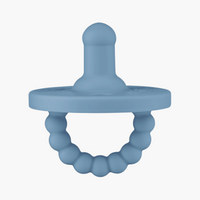


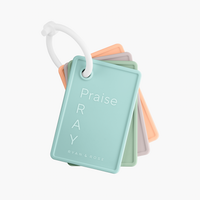




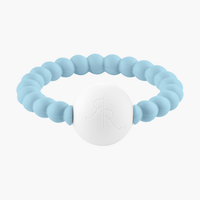



















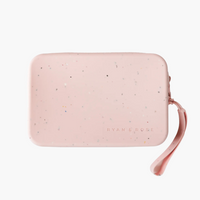
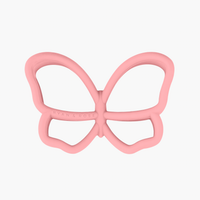





















1 comment
Love your article. Sounds like some great ideas. The 10 minute attention time I will try but what if it ends with more frustration and whining?